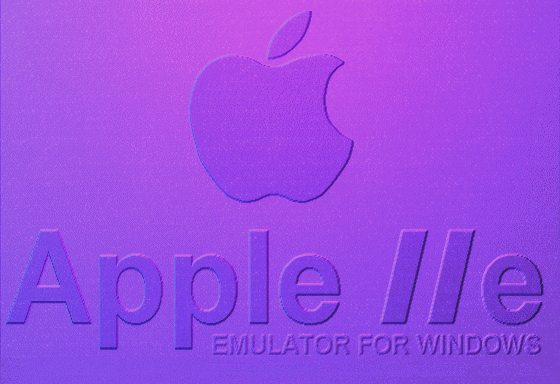
Running Apple 2 Computer software "BEX" from Windows
Installing and Using an Apple 2 Emulator to run Apple 2 software from Windows
Installation
Click here to Install WinBEX (installs so quick you might think nothing happened)
Click here to Install CiderPress 300 (free utility to manage Apple 2 disks on a PC)
List of Apple 2 virtual disks image distributed
Start, Configure, then Close the Apple Simulator
Find the WinBEX icon on your desktop and double click on it to launch it. Maximize the screen with Alt-spacebar X.
Press f8 to configure (you want Apple //e computer, monochrome video, and fastest possible speed).
Press Alt-F4 to close the Apple Simulator.
Icons in the Apple Simulator
There are eight icons from top to bottom:
- hide the icons
- Apple icon for "boot the computer"
- insert a virtual disk in "Apple drive one"
- insert a virtual disk in "Apple drive two"
- copy a file from the Apple simulator to the PC
- lock or unlock a virtual disk
- debug mode (computer programmers only)
- configure your Apple (you want Apple //e computer, monochrome video, and the fastest possible speed).
Keyboard Shortcuts
- Alt-F4 -- close the WinBEX application
- Alt-spacebar X -- Maximize the WinBEX application
- f2 -- boot disk in drive 1
- f3 -- change disk in drive 1 (prompted, JAWS accessible)
- f4 -- change disk in drive 2 (prompted, JAWS accessible)
- f8 -- configure (you want Apple //e computer, monochrome video, and fastest possible speed).
- f9 -- toggle from full screen to window
- f11 -- three way toggle video. Keep it on monochrome. In the "hi res" modes in BEX you
want solid green letters, not mixed up colors.
- PageUp and PageDown -- speed switching of disk in drive 1 (no prompting)
- Home and End -- speed switching of disk in drive 2 (no prompting)
Launching BEX and MathematiX
Follow these instructions to Boot Bex, and then load the Main Disk and the
MathematiX disks, and insert the dissertation data disk into Apple drive 2.
- Launch from WinBEX icon on the desktop
- Alt-spacebar X, to maximize the WinBEX Window
- Press F3, select bexboot, then click on Open
- Press F2 to boot the disk.
- When prompted to "Enter Configuration" press the Enter key
- At the "Starting" prompt, Press F3, select bexmain, then click on Open
- Press the spacebar to load the BEX Main disk
- At the "Main" prompt, Press F3, select mtx, then click on Open
- Press the spacebar to load the MathematiX disk
- Press F4, select cnthesis, then click on Open to get the "Caryn Navy Ph.D. dissertation" disk into drive 2.
To display the fourth chapter as braille on the screen
- Get to the Math Menu. Make sure the dissertation disk is in disk drive 2 (perform all the steps in the previous section)
- Press P, 2 <Enter><Enter> (get a list of files)
- Press 4, <Enter><Enter> (select the fourth chapter in the list)
- Press SB<Enter> (display to screen with a braille font)
- Press space to go to the next screen, or <Esc> to quit
To display the fourth chapter as math symbols on the screen
- Get to the Math Menu. Make sure the dissertation disk is in disk drive 2
- Press M, 2 <Enter><Enter> (get a list of files)
- Press 4, <Enter><Enter> (select the fourth chapter in the list)
- Press S<Enter> (display to screen)
- Press space to go to the next screen, or <Esc> to quit
Note on CiderPress Utility
Reading native LISA assembler files from the Apple images is difficult, since the files are partially tokenized.
If you right click on a file name, and edit the file attribute "file type" to $F4, you can view the file (in other words,
CiderPress 300 can read LISA tokens). From the view screen, you can copy the source code into the clipboard and save the source code on a PC.

